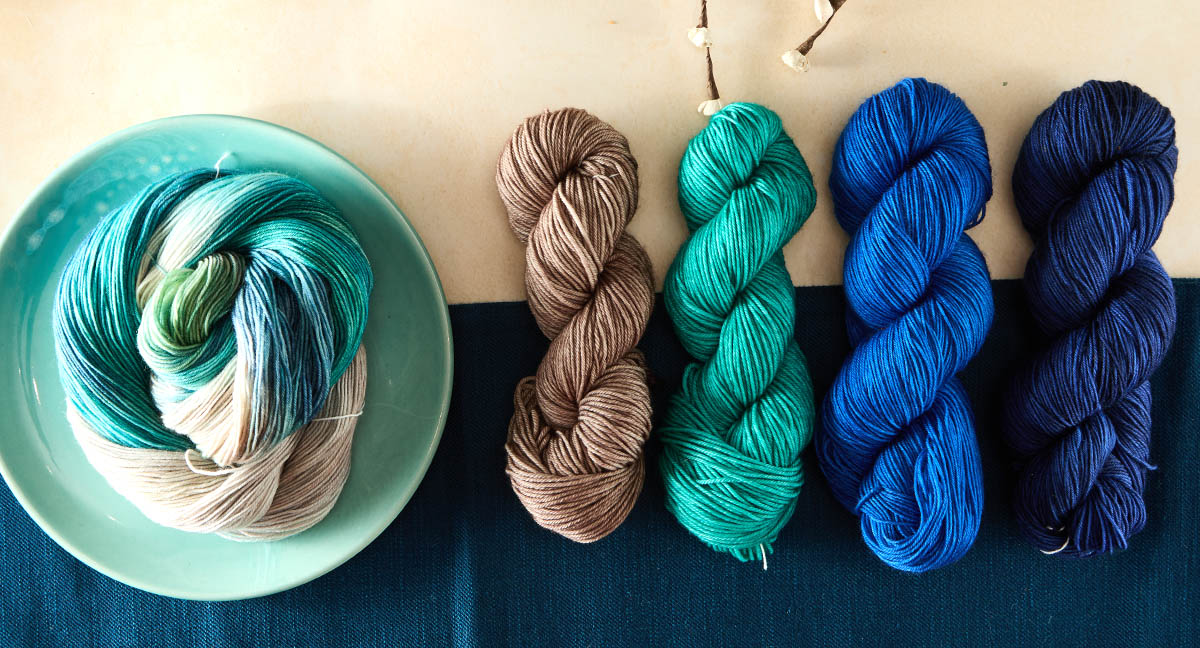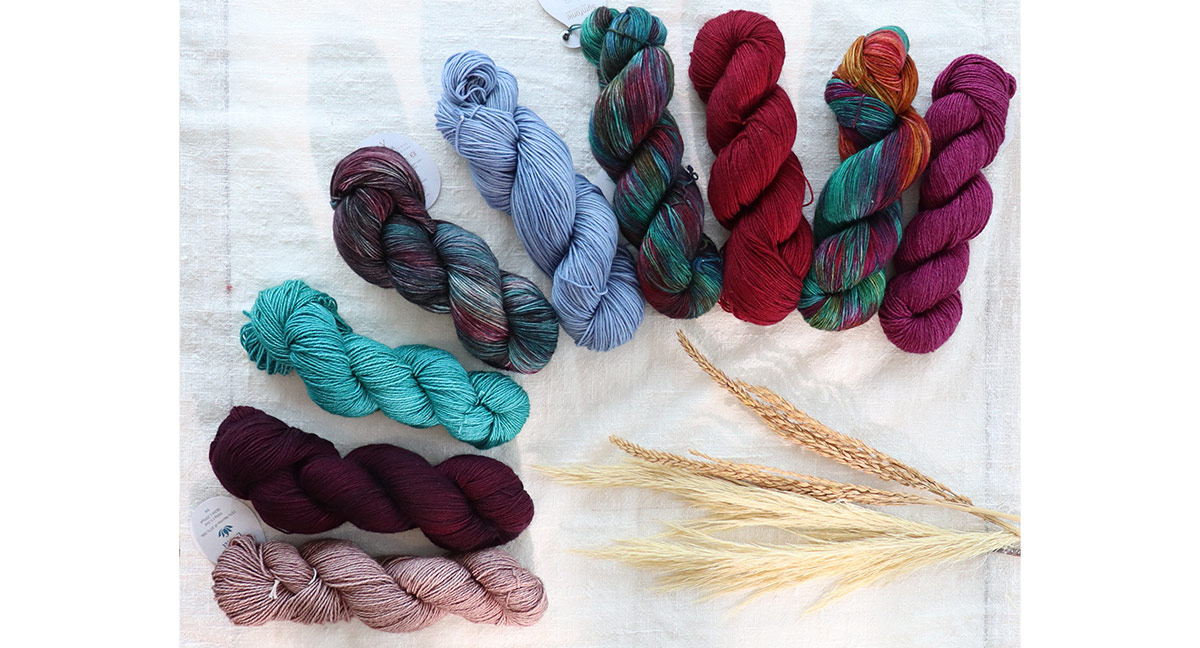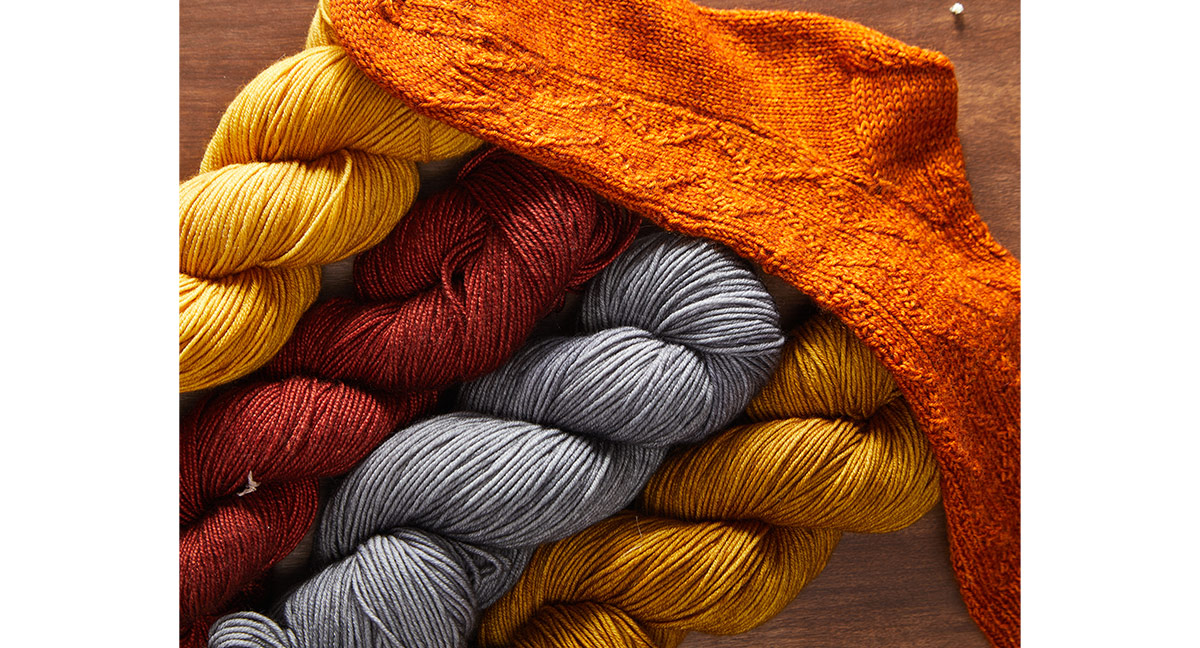Yarn Weight Guide: All Your Questions Answered
- Blog Views : 2160
- Symfonie Yarns
- 31May, 2025

Yarn weight is a term often thrown about by fiber artists. It is an essential factor for any yarn for any knitting or crochet project. Yarn ranges in weight from hair-like (lace) to rope-like (chunky yarns), with fingering/sock, DK, worsted-weight and bulky in the middle. What works for socks does not necessarily work for a blanket, which is why we will be discussing the yarn weight guide. We’ll answer your most common questions and share handy tips (including what to do when yarn labels are missing). Let’s dive in!
What Is Yarn Weight and Why Does It Matter?
Yarn weight refers to the thickness of the yarn strand. It is not the actual weight in grams or ounces (often mentioned for a yarn skein). It directly affects the look, feel, and fit of your finished project. So, what does yarn weight mean and why does it matter? Well, what works for a pair of socks is not the right choice for a blanket. So, does it mean that yarn weight for knitting and yarn weight for crochet are different? The answer is no. You can knit or crochet with fingering, DK, or worsted-weight yarn. The only rule is to work with a matching knitting needle or crochet hook size.

Also read- Complete Guide to Yarn Weight and Sizes
What Are the Different Yarn Weights?
Yarn weights are categorized from hair-like lace to jumbo varieties. The common options are fingering weight, also known as sock yarn, DK or double knitting yarn and worsted-weight (preferred by beginners and knitters for quick projects). How many yarn weight categories are there?
The Craft Yarn Council has designated 8 different yarn weight categories.
| Yarn Weight / Name |
Type of |
Recommended knitting needle size (mm) |
Recommended crochet hook size (mm) |
Knit Gauge |
Crochet Gauge |
|
0 or Lace |
Fingering 10-count crochet thread |
1.5 - 2.5 |
1.5 - 2.5 |
33–40 |
32–42 |
|
1 or Super Fine |
Sock, Fingering, Baby |
2 - 3 |
2.25 - 3.5 |
27–32 |
21–32 |
|
2 or Fingering |
Sport, Baby |
3 - 4 |
3.5 - 4.5 |
23–26 |
16–20 |
|
3 or Light |
DK, |
4 - 4.5 |
4.5 - 5.5 |
21–24 |
12–17 |
|
4 or Medium |
Worsted, |
4.5 - 5.5 |
5.5 - 6.5 |
16–20 |
11–14 |
|
5 or Bulky |
Chunky, Craft, Rug |
5.5 - 8 |
6.5 - 9 |
12–15 |
8–11 |
|
6 or Super Bulky |
Super Bulky, Roving |
>8 |
>9 |
7–11 |
7–9 |
|
7 or Jumbo |
Jumbo, Roving |
12.75 mm and larger |
15 mm and larger |
6 sts and fewer |
6 sts and fewer |
*as mentioned in the Craft Yarn Council Standard Yarn Weight Table
Always check your pattern for the recommended yarn weight and knitting needle or crochet hook size before starting your project.
Also read - The Ultimate Guide to Yarn Weights: Fingering, DK (Double Knit) vs Worsted
How Do I Know the Weight of Yarn Without a Label?
Sometimes you inherit yarn or misplace labels. Unlike needles or hooks (which can be sized using a needle sizer), yarns don’t come with a built-in size guide. But there are a few simple tricks to identify the weight:
1. Use the Wraps Per Inch (WPI) Method
The WPI method, wraps per inch is a reliable way to gauge yarn thickness.
How to calculate?
- Wrap your yarn snugly (but not tightly) around a knitting needle (5mm) or ruler for 1 inch.
- Count how many times the yarn wraps around.
Here’s a yarn weight guide - WPI
| Wraps Per Inch (WPI) |
Yarn Weight |
|
35+ |
Lace |
|
19–22 |
Fingering |
|
15–18 |
Sport |
|
12–14 |
DK |
|
9–11 |
Worsted |
|
7–8 |
Bulky |
|
5–6 |
Super Bulky |
|
1–4 |
Jumbo |
Also read- Complete Guide to Yarn Weight and Sizes
2. Knit or Crochet a Swatch
Make a small swatch and measure your gauge (stitches per inch). Compare your gauge to a yarn weight chart or to your pattern’s requirements.
What Happens If I Use the Wrong Yarn Weight?
Using the wrong yarn weight can:
- Throw off your gauge
- Change the drape or structure
- Result in a project that’s too big or too small
- Alter the yardage needed
Always swatch and adjust your hook or needle size accordingly.

Is Yarn Ply the Same as Yarn Weight?
No. Ply refers to how many strands are twisted together to make the yarn. While in some countries (like the UK), ply loosely correlates to weight, it’s not a reliable indicator globally.
For example:
A 4-ply yarn in the UK is equivalent to fingering weight.
A 4-ply yarn in the US could refer to worsted weight.
So always go by weight and WPI or gauge, not ply.
Also read - Yarn Essentials: Understanding Ply and Thickness for Successful Crafting
Can I Substitute One Yarn Weight for Another?
Yes, but it takes a bit of planning:
Substitution tips:
- Stick as close as possible to the original yarn weight.
- Always make a swatch to test the gauge.
- Adjust hook or needle size as needed.
- Use yardage calculators to make sure you have enough yarn.
Also read - Guide to Yarn Substitution for Your Knitting Projects
How Do Yarn Weights Affect My Project?
The yarn weight affects the knitting needle and crochet hook size. It also impacts the stitch size. Fingering weight yarn paired with 2mm needle or hook size creates fabric that is lightweight and has drape, such as socks and shawls. DK weight yarn is a popular weight that is perfect for projects such as knitted garments to crocheted granny squares. Worsted-weight is another popular yarn loved by beginners as well as for quick projects.
Here’s a quick breakdown:
- Lace & Fingering: Best for delicate shawls and socks.
- DK & Sport: Great for baby clothes and light garments.
- Worsted & Aran: Ideal for sweaters and blankets.
- Bulky & Jumbo: Perfect for scarves, throws, and quick projects.
Understanding yarn weights is an essential skill a knitter or crocheter must develop. Whether you're choosing a yarn for a new pattern or diving into your leftover stash, understanding the yarn weight guide saves time and frustration.
-
- 02 Dec,2025
-
- 27 Nov,2025
-
- 24 Nov,2025
-
- 19 Nov,2025
-
- 17 Nov,2025
-
- 10 Nov,2025
Copyright © Symfonie Yarns 2025 - all rights reserved | RSS Feed
